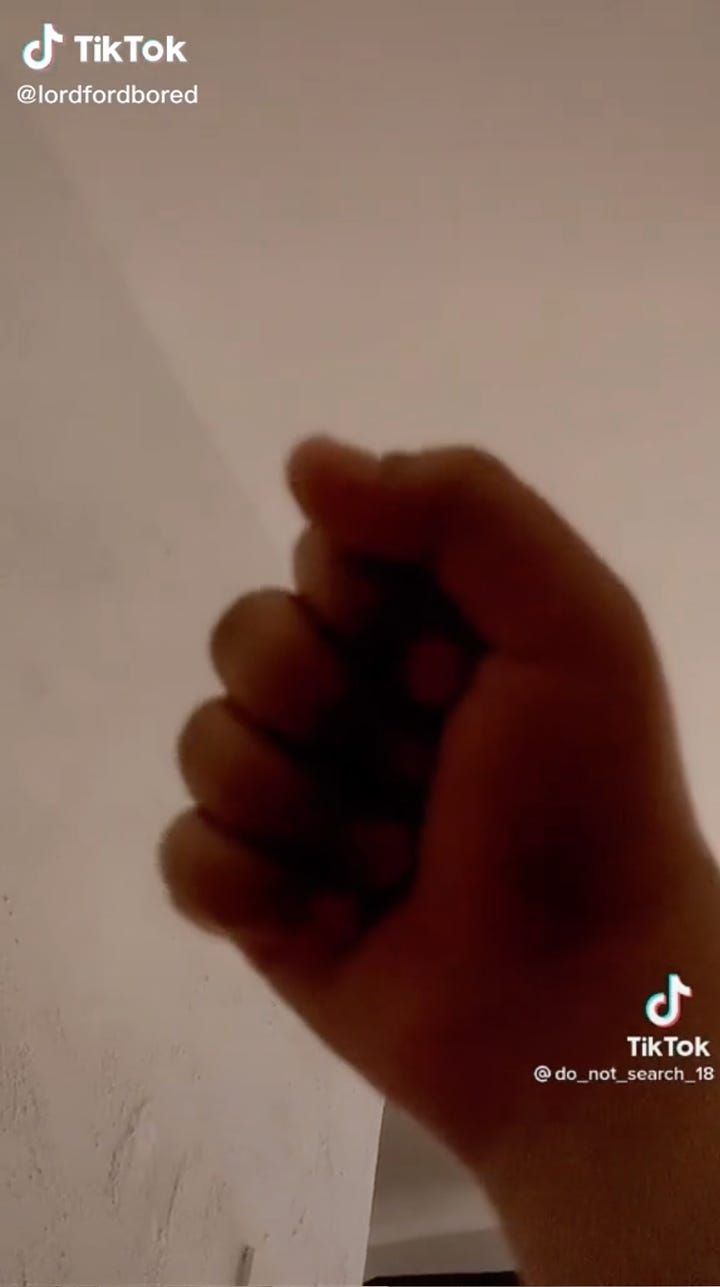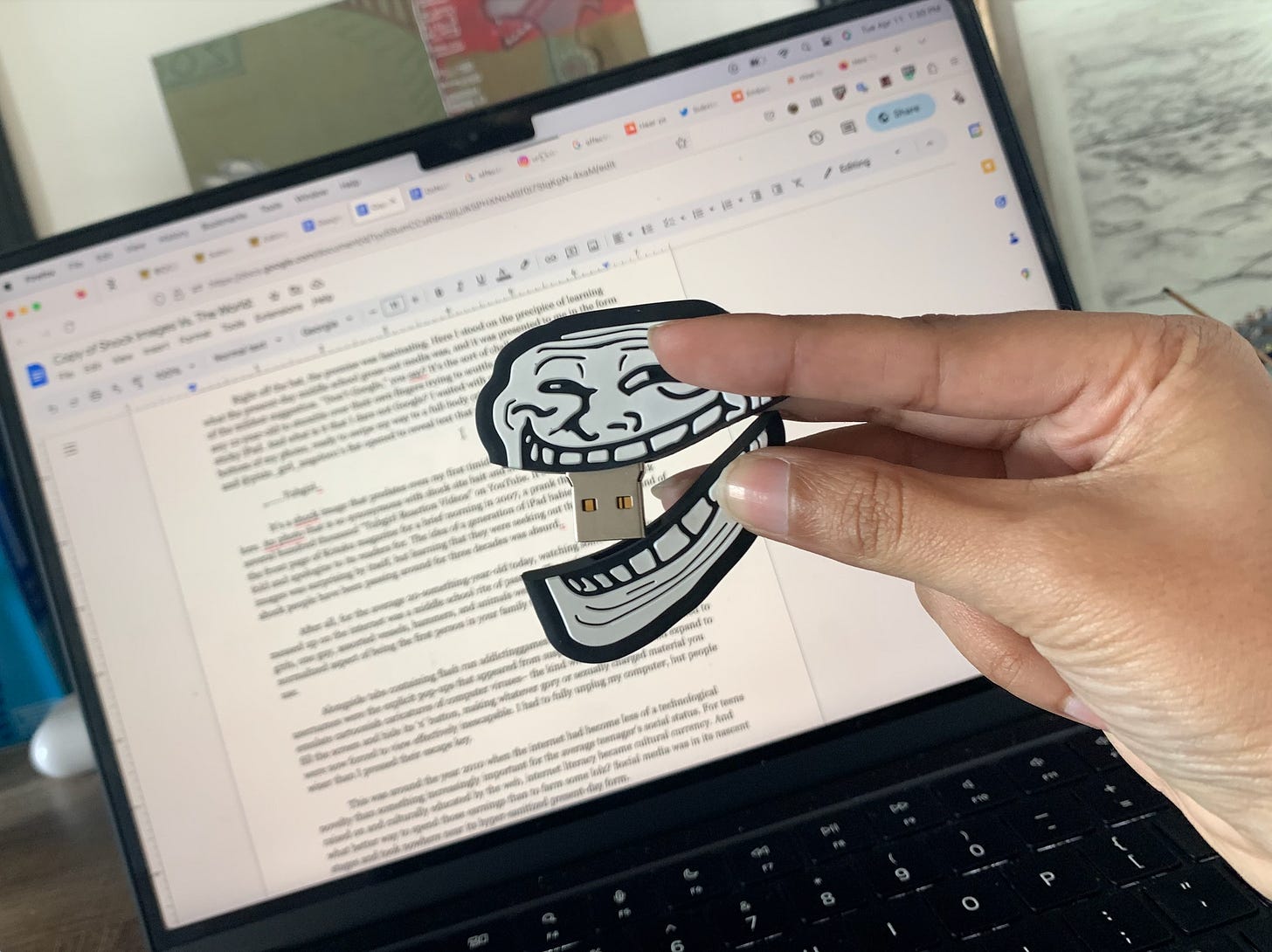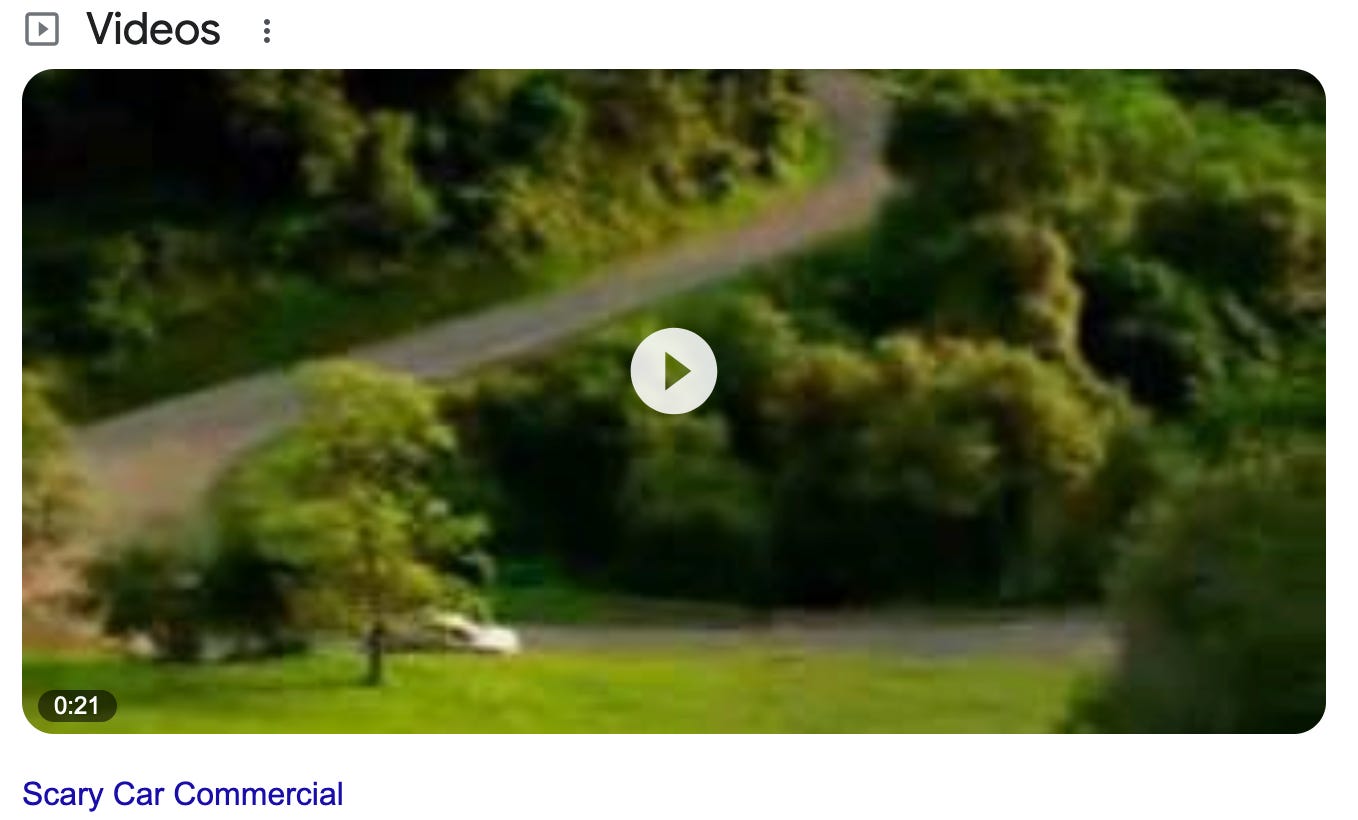Mid-August 2022, TikTok user @pixie_girl_angel001 (account since suspended) posted a video set to a banal Taylor Swift song, her tiny balled-up fist placed against a floral bedsheet, with a text overlay that read, “Do NOT Google…”
Right off the bat, the premise was fascinating. Here I stood on the precipice of learning what the present-day middle school gross-out media was, and it was presented to me in the form of the mildest suggestion. “Don’t Google,” you say? It’s the sort of challenge that would compel any 12-year-old to stumble over their own fingers trying to scuttle to the Google icon on their sticky iPad. And what is it that I dare not Google? I waited with my finger perched above the bottom of my phone, ready to swipe my way to a full-body cringe. The beat rose and dropped, and @pixie_girl_angel001’s fist opened to reveal text that reads–


,,......Tubgirl..
It’s a shock image that predates even my first timid forays into scummy Internet fetish lore. An photo that is so synonymous with shock site bait and switch pranks that it has over several hundred thousand “Tubgirl Reaction Videos” on YouTube. It even famously featured on the front page of Kotaku magazine for a brief morning in 2007, a prank that the website had to fold and apologize to its readers for. The idea of a generation of iPad babies consuming shock images was surprising by itself, but learning that they were seeking out the exact same brand of shock people have been passing around for three decades was absurd..
After all, for the average 20-something-year-old today, watching something really messed up on the internet was a middle school rite of passage. The various configurations of two girls, one guy, assorted vessels, hammers, and animals were a horrifying but seemingly normalized aspect of being the first person in your family to really put the home computer to use.
Alongside tabs containing flash run addictinggames.com and cringey 6th-grade Hotmail usernames were the explicit pop-ups that appeared from suspicious hyperlinks. They seemed to emulate cartoonish caricatures of computer viruses– the kind where a website would expand to fill the screen and hide its ‘x’ button, making whatever gory or sexually charged material you were now forced to view effectively inescapable. I had to fully unplug my computer, but people wiser than I pressed their escape key.
This was around the year 2010 when the internet had become less of a technological novelty than something increasingly important for the average teenager’s social status. For teens raised on and culturally educated by the web, internet literacy became cultural currency. And what better way to spend those earnings than to farm some lolz? Social media was in its nascent stages and took nowhere near its hyper-sanitized present-day form.
Modern-day Facebook and Gmail privacy and security settings were as effective as public school D.A.R.E. programming, more of a suggestion than an enforceable measure. Websites that were entirely dedicated to material meant to “shock” were a staple, serving two purposes; horrifying an unsuspecting viewer and displaying the prankster’s bravery and knowledge in traversing the seedy web.
These websites barely hosted videos or jpegs beyond their landing page, the viewing of which was an end in itself. Being assailed by the visual of these sites felt like staring into the eye of Sauron; if it were being held open by two white-knuckled fists. This, when combined with names that sound innocuous at first blush; meatspin, lemonparty, goatse; made the sites perfect prank fodder for the edgier kids amongst the internet literate, who smote the unwary with scandalizing visuals via email chains, clickbait, or public school computers.
Prometheus for some, and Pandora for others, these pranksters shared a vile side of humanity in a fashion that became so infectious that it often compelled unwitting victims to then become perpetrators themselves. Evidence of this can be seen in the thousands upon thousands of “My Roommate/ Friend/ Mom/ Girlfriend reacts to _____” YouTube videos that followed any new viral bait-and-switch craze.
While the lasting present-day appeal of shock sites to particular demographics (freaks, fetishists, internet anthropologists alike) may be obvious, the digital terrain upon which these shock-site pranks are conducted has turned overtly hostile to them. Whether it’s Facebook’s practice of hiring thousands of third-world grunts to tackle their “report” features and sift through photo upon photo of mangled bodies and unflattering tagged pictures alike, or Tumblr’s infamous and unceremonious porn ban in 2018, it seems obvious that the internet has been undergoing a thorough and rapid sanitization.
This is a point no better proven than by the decline of shock sites themselves, many of which have had to jump across spellings and domain names, or shut down entirely. Take the death of Liveleak in 2021, with its creator asserting that the site had achieved “all that it could,” or the long-limping but finally defunct Rotten.com, one of the oldest gross-out sites on the internet as we know it.
It seems like the masses reached a general consensus regarding gore and its morbid consumption– no matter the evil that exists in the world, the need for a consolidated space to depict it is unwelcome. No more ISIS beheading videos. No more Russian maniacs hammering in skulls. John Berger was right when he wrote Photographs of Agony; all that these gory images do is offer the coddled first-world teenager some cheap thrills that no more teach him about global politics than they do safe anal jar insertion.
Yet, miraculously, despite it all, the shock visual persists today. Per anthropological observation, for months on end, the scum that rises to the top of Google search trends globally is one of two things; political BS and a steady stream of queries about eel girl, pain Olympics, blue waffle et all. Despite the attempts by tech giants like Google and Meta to pave squeaky-clean paths for people to toe commercially viable lines on, something still seems to be drawing eyeballs to the seedy geriatric web. That this fact was made obvious to me through the media slop delivered by TikTok, a fellow tech leviathan, is a conundrum for another insipid essay.
It seems like there exists an innate impulse to view gore, and the internet is just one avenue for kids to act on it, given that the offline options are restricted to frying ants with magnifying glasses. But while the historic appeal of the shock site has been one fueled by internet illiteracy and the novelty of viewing something truly depraved in the comfort of one’s home, the shock image persists due to an inversion of this premise. Today, the supposed “innate impulse” to view gore is not an impulse to view just any gore, it’s an impulse to engage with a piece of internet history, mythologized through years and years of documented shock and horror reaction footage.
The @pixie_girl_angel001s of the world navigate an internet propped up by white picket fences that don’t allow for them to stumble across whatever third-world atrocity some shock site wants to leverage for clicks, and they shouldn’t have to. The shiny paved internet pathways laid by tech moguls are a boon for the queasiest among us. But the fact that there still exist brave explorers that choose to walk through the trails hacked into the wilderness by fellow voyagers of times past is incredibly telling about the innate human need to relate to versions of themselves that once lived.





